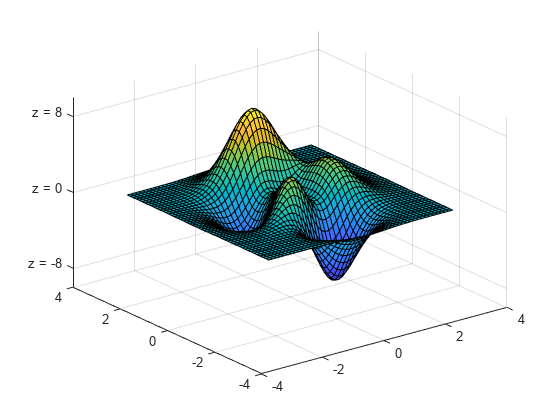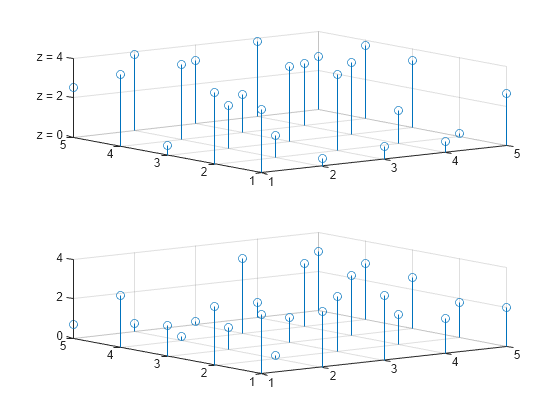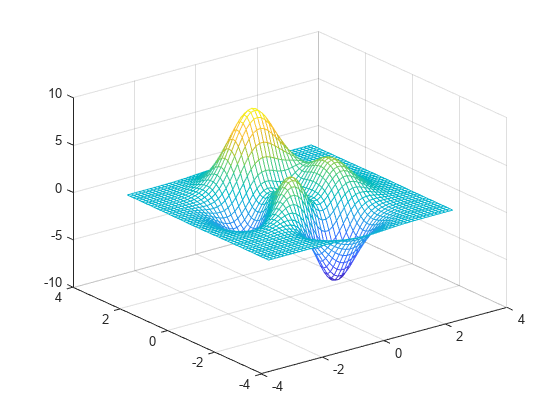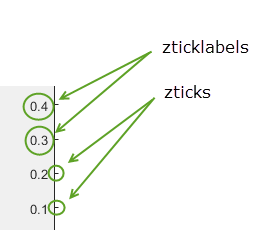zticklabels
设置或查询 z 轴刻度标签
语法
说明
zl = zticklabels
zticklabels('auto') 设置自动模式,使坐标区确定 z 轴刻度标签。如果您设置了标签,然后又想将它们设置回默认值,则可以使用此选项。
zticklabels('manual') 设置手动模式,将 z 轴刻度标签冻结在当前值。
m = zticklabels('mode')'auto' 或 'manual'。默认情况下,该模式为自动,除非您指定刻度标签或将模式设置为手动。
示例
输入参数
输出参量
详细信息
算法
zticklabels 函数设置并查询与 z 轴刻度标签有关的多个坐标区属性。
ZTickLabel- 用于存储 z 轴刻度标签的文本的属性。ZTickLabelMode- 用于存储 z 轴刻度标签模式的属性。使用zticklabels设置 z 轴刻度标签时,此属性将更改为'manual'。ZTickMode- 用于存储 z 轴刻度值模式的属性。使用zticklabels设置 z 轴刻度标签时,此属性将更改为'manual'。
版本历史记录
在 R2016b 中推出





